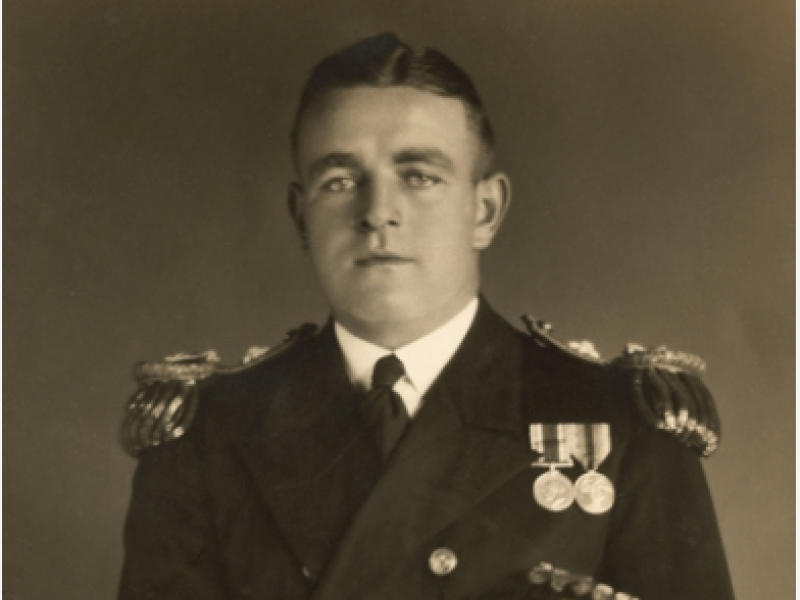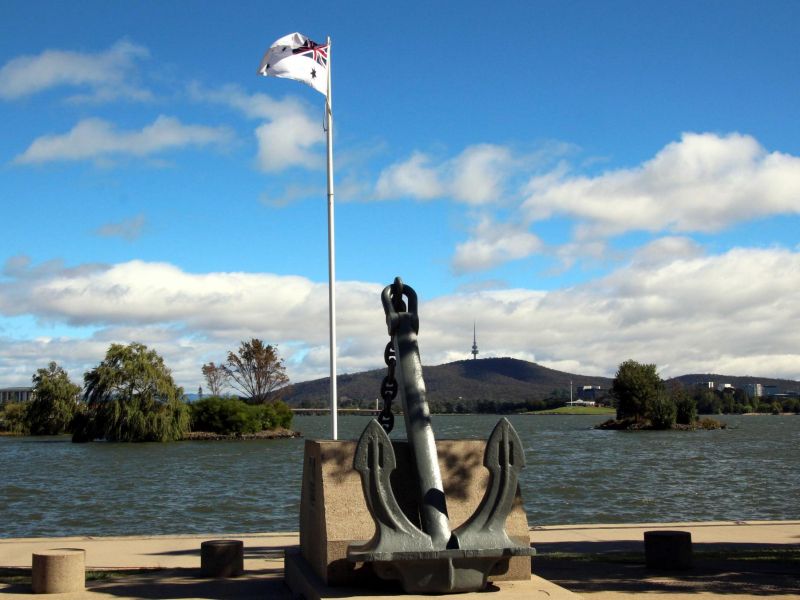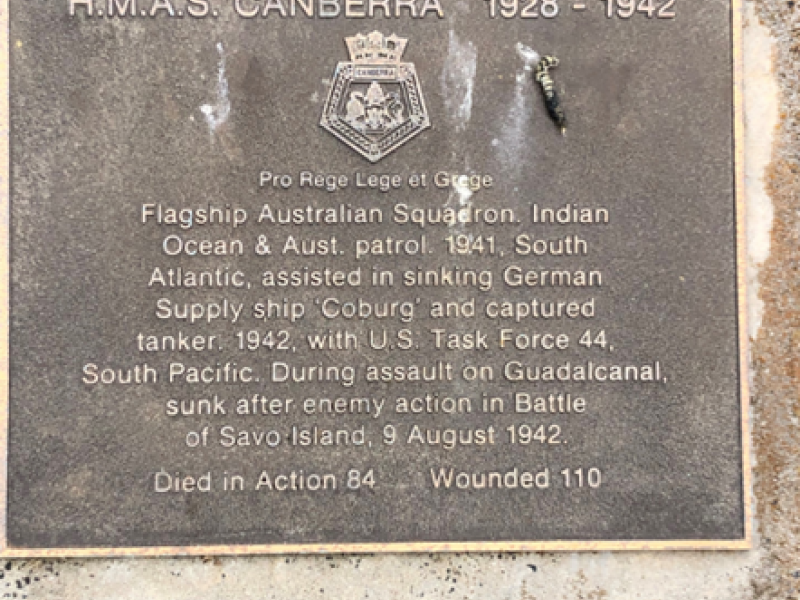Captain Frank Edmond Getting, HMAS Canberra, RAN
Frank Getting was born on 30 July 1899, the youngest of three to Paul and Janet Getting of Manly, Sydney.
Getting joined the Royal Australian Navy on 31 December 1912 at the age of 13. He was selected for the first intake of midshipmen at the Royal Australian College in Geelong, Victoria. It was the beginning of long and distinguished service that would span two world wars.
Graduating in 1916, Getting was sent to the United Kingdom (UK) as part of the Royal Navy’s Grand Fleet. In April 1917, he joined the light battle cruiser, HMS Glorious. In September 1918, he was promoted to acting sub-lieutenant and transferred to HMS Benbow, an Iron Duke-class dreadnaught.
In 1919, Getting joined his first Australian ship, HMAS Platypus, and escorted six J-class submarines to Australia. He then returned to England to study with the Royal Navy, topping his class in the torpedo course. He was promoted to lieutenant before serving in the 2nd Submarine Flotilla back in Australia.
In 1926, Getting became the first Australian submarine officer to qualify at the Royal Navy’s Submarine Commanders’ Officers’ Course, and received his first command, a British submarine. Soon afterwards, he became First Lieutenant of the Australian submarine HMAS Oxley (I) for two years, and then, Commanding Officer.
Getting continued to serve with distinction in the UK and Australia. In June 1938, he married Hazel Stewart in Sydney.
In September 1939, Getting was Operations and Intelligence Staff Officer on the cruiser HMAS Canberra. By October, he was commanding the armed merchant cruiser HMAS Kanimbla, spending 1940 patrolling the Chinese and Japanese coasts for German merchant ships.
Getting was confirmed captain on 31 December 1940, and was Deputy Chief of Navy until June 1942, when he was given command of HMAS Canberra.
Canberra was part of Task Group 44, a naval force of Australian and US ships supporting the American landings in the Solomon Islands. It was an essential communication pathway.
In the early hours of 9 August, a powerful Japanese force launched a surprise attack on the Allied ships near Savo Island. Canberra was hit by 24 large calibre shells in less than two minutes.
Nearly 200 Australians were killed or wounded in the attack, and Captain Getting received severe wounds. However, he refused medical attention and ordered the ship’s surgeon to attend to others.
Getting remained at his post and continued to direct operations until he was reluctantly evacuated for medical treatment aboard the USS Patterson. Getting died of his wounds shortly afterwards, and was buried at sea.
He was 43 years old.
Later, his grieving wife, Hazel, said, “I am proud of Frank. He loved the sea and he was willing if needs be, to give his all for his country. He would not have wished to go in any other way.”
His name is listed on the Plymouth Naval Memorial in the United Kingdom, with 16,000 Second World War sailors who have no known grave.
David Sutton, Historian, Military History Section
- Australian War Memorial https://www.awm.gov.au/collection/AWM2021.1.1.29

 Australian War Memorial
Australian War Memorial
